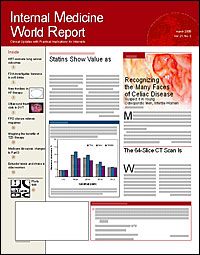New Navigation Technology Helps Detect Early Lung Cancer
Diagnosing lung cancer in its early stages is often difficult. A new imaging technology called the superDimension/Bronchus System (SDBS) can detect a suspicious mass in the peripheral areas of the lung and help diagnose lung cancer early, according to Joseph Cicenia, MD, FCCP, director, Pulmonary Interventional Procedure Pro?gram, Saint Vincents Catholic Medical Centers, New York City.
"This technology permits doctors to use a bronchoscope to make a diagnosis of suspicious lesions in the lung's periphery that are typically difficult to sample by standard bronchoscopic methods," Dr Cicenia said. "This allows for a less invasive and potentially safer method of diagnosis."
This new, FDA-approved system is gradually being introduced to hospitals in the United States and is currently in use at institutions such as the Cleveland and Mayo Clinics and the Johns Hopkins University Medical Center.
"Although flexible bronchoscopy is a common method for diagnosing lung cancer and is generally a low-risk procedure, it can't reach the lung's periphery, where many masses are located," Dr Cicenia explained. "A bronchoscopy that doesn't permit a diagnosis needs to be re?peated or replaced with more invasive ap?proaches, such as computed tomo??graphy?guided percutaneous needle biopsy or surgical biopsy."
SDBS is a minimally invasive procedure that can overcome the limitations of traditional bronchoscopy by extending the reach of the bronchoscope into the lung's periphery. This allows the physician to promptly biopsy and definitively diagnose the target mass, according to Doron Besser, MD, vice president of medical affairs at superDimen?sion, the system's manufacturer.
Clinical studies have demonstrated an 80% success rate in diagnosing lung lesions and a 95% success rate in determining disease stage. Dr Besser noted that this system can be navigated anywhere in the lungs in real time and on a 3-dimensional road map. "This capability provides higher success rates and broadens the applicability of standard diagnostic bronchoscopy," he said.
In 2005, lung cancer was responsible for >163,000 deaths in the United States.
